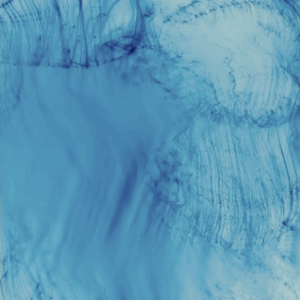JTF (just the facts): Published in 2020 by Kris Graves Projects (here). Softcover (7×9 inches), 64 pages, with 26 black-and-white reproductions. Includes texts by the artist and short quotes from Wright Morris and various pieces of scripture. In an edition of 300 copies. (Cover and spread shots below.)
Comments/Context: If you head out across the flat desert heading west from Taos, New Mexico, on US 64, about ten miles from town you’ll find a deep gouge in the Earth know as the Rio Grande Gorge. The dry, rocky terrain is a bit like a moonscape (which is why 1970s era Apollo astronauts trained here), and the river itself has cut through the rock with surprising depth (some 600 feet), creating a deep canyon with steep sides that fall away from the flatness above. A spindly two-lane bridge has been built across the span of the gorge, so traffic can get across the divide, and there are sidewalks, so people can walk across and take a breathtaking look down. Depending on who is doing the measuring, it is counted as one of the ten highest bridges in the country, and in my own anecdotal experience, those with a fear of heights literally won’t get out of the car to even get near this bridge, much less walk across with the wind whistling and the bridge shaking because of the passing trucks.
Nat Ward’s photobook Big Throat takes this bridge as its subject and setting, although we never actually see the bridge itself or the wider sweep of the surroundings in any of his photographs. What he shows us instead is the perilous look down, where the dark shadows cast by the bridge (at different times of the day) interact with the rocky cliff sides and river bed underneath. The looming presence of the bridge invades every frame, insistently falling across the land and interrupting the bright unshielded sun.
The bridge is constructed of three arched spans of steel, with two smaller approach spans flanking the wider central span. When seen as a cast shadow, the roadway turns into a thick black line, and the steel supports underneath become a network of thinner lines like a lattice. In essence, all of Ward’s photographs are variations on these two motifs, with changes in shooting angle, spatial depth/distance, and time of day providing him with a limited, but surprisingly evocative artistic tool set. His pictures offer an understated homage to the many Modernist photographers who used the geometries of radio towers, electrical infrastructure, and vertiginous bridges to explore distortion and pattern, but are filtered through his own personal experience and mood, transforming them into something darker and more anxious.
Ward’s state of mind comes through strongly in the texts included in Big Throat, and as photobooks go, it is far more evenly balanced between image and text than most. The main text is a poetic stream of consciousness that jumps around the black pages, and through it we can piece together some of the backstory to this project – a roadtrip with his wife, a new pregnancy, various fights, frictions, and frustrations between the two, a rented truck, a soggy night of camping, some marginal hotels across New Mexico, and ultimately, a night in a casino in Las Vegas. As Ward walks back and forth over the bridge making his photographs, these images wander through his head, breaking up into shards and reforming into incomplete thoughts and impressions that are then relinked together into a forward flow. In a few cases, Ward has also included snippets of reassuring scripture found pasted to the suicide hotline booths on the bridge, adding a grim sense of foreboding to the already unsettled proceedings.
When we return to the photographs, those black shadows are looking altogether more ominous. Many images feature the slashing form of the roadbed draped across the rocks, the thick arrow dragging along tendrils of wispy lines from its undercarriage. Ward plays with the angles and often opts for Rodchenko-like steepness or skewed perspective to make a composition more vital. Underneath those shadows, Ward revels in texture, the rocky washes, scrub covered hillsides, and tumbled hollows blasted into crisp monochromes and roughly tactile details. The photographs continually interrogate the idea of crossing and falling, the indeterminate shadows traversing the land again and again, and dropping to the rocky bottom to lie flattened against the unforgiving ground.
A second group of images crops the bridge shadows down tighter, removing the thick roadbed and centering in on the basket weave of the steel wires. In these images, Ward plays with the push and pull between straight shadows and undulating terrain. What emerges are lines that seem to dissolve and bend, almost like the light reflections in the bottom of a swimming pool. In a few cases, the network of lines feels claustrophobic, like prison bars closing in; in others, the net liquifies and breaks down, dripping over the hillsides.
In the end, Big Throat is an introspective photobook – it’s about standing alone on a bridge and looking down into the depths of a canyon, and in doing so, taking a moment to take stock of one’s life. Ward’s pictures tell us that he was, at that time, tormented a bit by his own shadows, the imminent arrival of a new life perhaps also putting a point on the tangible possibilities of death. Where this photobook succeeds is in capturing that atmosphere of personal instability, and the invisible traumas witnessed and faced over the side of the bridge. Big Throat is memorably jangly and haunted, leaving us with the howling rattle of personal choices made and unmade.
Collector’s POV: Nat Ward does not appear to have consistent gallery representation at this time. As a result, interested collectors should likely follow up directly with the artist via his website (linked in the sidebar).























